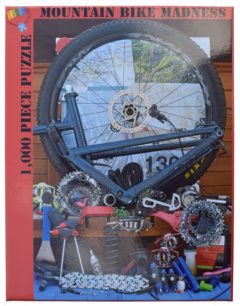Jigsaw puzzles are often thought of as a solitary activity, but they can also be a great way to bring people together. Collaborative puzzles are a fun and engaging way to challenge a group of people to work together towards a common goal. In this post, we’ll explore how to organize a collaborative puzzle challenge, including tips for selecting puzzles, establishing rules, and offering prizes.
Selecting Puzzles
The first step in organizing a collaborative puzzle challenge is selecting the right puzzle(s). You’ll want to choose a puzzle that is challenging, but not so difficult that it discourages participation. It’s also important to consider the size and complexity of the puzzle, as well as the number of participants. A 500-1000 piece puzzle is a good starting point, as it can typically be completed in a reasonable amount of time by a group of people.
Establishing Rules
Once you’ve selected the puzzle, it’s important to establish rules for the challenge. This can include guidelines for how the puzzle will be assembled (e.g. table size, number of participants per table), as well as any time limits or deadlines for completion. You may also want to consider rules for how the group will work together, such as restrictions on individual efforts or guidelines for sharing puzzle pieces. Finally, it’s important to establish clear guidelines for how the winner will be determined, as well as any prizes that will be offered.
Offering Prizes
Prizes can be a great way to incentivize participation and make the collaborative puzzle challenge more exciting. You may want to offer a prize to the group that completes the puzzle the fastest, or to the group that completes the puzzle with the most accuracy. Prizes can range from small items like puzzle-themed key chains or t-shirts, to larger prizes like gift cards or cash.
Tips for Success
To ensure the success of your collaborative puzzle challenge, it’s important to consider a few additional tips.
First, make sure to communicate clearly with all participants about the rules and expectations for the challenge. This includes providing clear instructions on how to participate, as well as any deadlines or timelines for completion.
Second, consider providing participants with tools and resources to help them complete the puzzle, such as puzzle mats, sorting trays, and magnifying glasses. These can help participants work more efficiently and comfortably, and can also make the process more enjoyable.
Third, consider incorporating team-building activities or ice-breakers into the challenge to help participants get to know one another and build a sense of camaraderie. This can help make the experience more enjoyable and rewarding for everyone involved.
Finally, don’t forget to celebrate the completion of the puzzle and recognize the hard work of all participants. This can include holding a small ceremony or awarding prizes, as well as taking photos or videos to commemorate the occasion.
By following these tips, you can help ensure the success of your collaborative puzzle challenge and create a fun and engaging experience for all participants. Collaborative puzzles can be a great way to bring people together and encourage teamwork, and with the right preparation and planning, you can create an event that everyone will enjoy.
